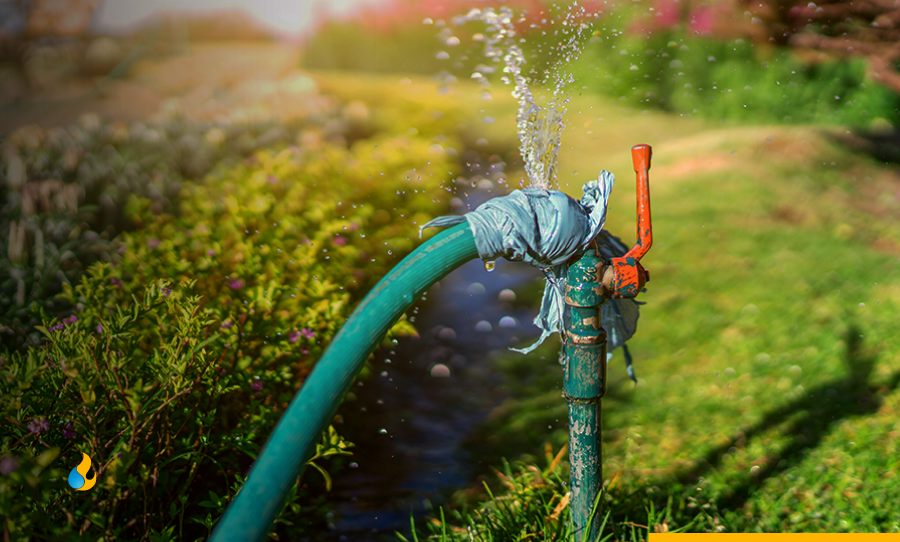
Gas can easily be forgotten, but checking your gas lines to make sure they work correctly, is critical and should be done regularly. Any gas appliance in your home can produce carbon monoxide (CO), a highly poisonous gas that occurs when natural gas or liquid petroleum gas (LPG) doesn’t burn as it should. This is the result of a gas appliance being improperly fit, repaired, or maintained, or when vents have become blocked – and that’s why it’s so important to check your gas appliances.
Risks of gas appliances
Danger can arise from having an unsafe gas appliance in your home. An unsafe gas appliance can lead to carbon monoxide poisoning, fires, and leaks, although you can avoid these risks. Our gas safety tips will help you ensure all your appliances are working correctly and safely to keep your mind at ease.
We also highly recommend getting your gas pipework and your annual gas check inspected at the same time by a professional.
Let’s check out how you can ensure your home is gas safe.
Prevention – before moving into your home, have the gas appliances checked
When moving to a new home or apartment, before using gas appliances, make sure they have been checked by a professional gas fitter. If you are renting, you can ask the property manager or landlord to arrange this.
You may also be able to request a gas safe certificate from the landlord or previous tenants.
Correct use and ventilation
While it might seem obvious, it’s essential that you only use gas appliances for their intended purpose. This will ensure that the appliances are used safely and avoid any unwanted emergencies. Indoor gas appliances should have adequate ventilation to burn right, reducing the risk of fire or explosion, including kitchen range hoods, chimneys, and flues.
Get to know the warning signs
You can avoid any potential risks with your gas appliances by learning how to recognize any warning signs. To keep your appliances running safely, look for any leaks, cracks, clunking noises, or black marks. It’s also worthwhile checking outside your home to ensure any external vents are not being blocked. If you’re uncertain of anything, be sure to contact your local gas fitter to do a professional check.
Don’t panic in case of a leak
If there happens to be a gas leak inside your home, most likely, the first thing you will notice is the smell around the appliances. If you smell gas at your property, open all doors and windows to help ventilation and turn off the gas emergency valve control. Be aware not to turn on light switches or electrical appliances as these could spark and ignite the gas. Similarly, while it may seem like a good idea, avoid using a fan to disperse the gas, as this too could ignite. Do not smoke or light any matches or use a lighter.
As an extra precaution, leave the property and immediately report it to the SA Gov gas leak contact.
Ready to go – turning the gas on safely
Before turning your gas supply off or on, make sure you first turn off all gas appliances and pilot lights in your home, Eg: gas cooking appliances, heaters, and water heaters. If you have a gas water heater, turn the water supply tap off, too.
For your natural gas supply, you can locate your gas meter. It may be in a metal box on the side of your house or the backyard or front garden under a plastic cover. To turn on the gas supply, firstly, you’ll need to turn the valve tap to the horizontal off position (at a right angle to the pipe). Then to turn it back on, turn the supply tap valve to the vertical “on” position (in line with the pipe.) See the image below for reference.
If you are using an LPG supply (cylinders), you can turn the gas off by turning the valve at the top of the cylinder in a right clockwise direction until you cannot turn it anymore. If you have more than one cylinder, make sure you turn them both off. To turn the supply on, turn the valve anti-clockwise. If you cannot remember it, then think “righty tighty.”

Considerations
Be aware that, sometimes, during the process of turning gas off and back on again, air can get trapped in the gas pipes in your home. The first appliance you light will allow this trapped air to escape but, it may take a few moments to light – until the gas flows from the meter. If this doesn’t work, turn the appliance off, wait a few minutes for the unburnt gas to disperse then try to light the appliance again. Once it is lit, allow a couple of minutes for the gas to begin flowing properly. Gas stovetops are the easiest ones to light first if you have them in your home.
CONCLUSION
Doing a general gas check and being able to solve your gas supply is an essential step in making sure everything is running right and that you are safe. While it can seem like a minor inconvenience, a few moments of checking and contacting a certified gas fitter like Flowtec for an annual check can save you from any potential issues and more costs down the track. If you have any issues, questions, or need some help, don’t hesitate to call us on 0488 097 679!



